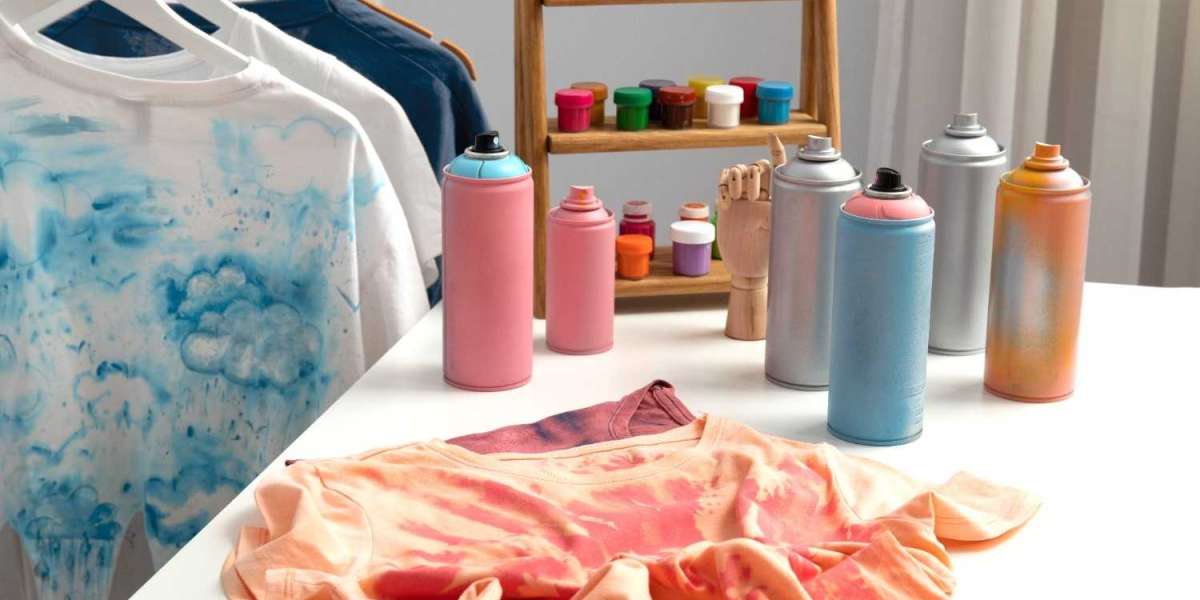Textile waste is fast becoming a valuable resource rather than a burden. With conscious consumers and brands seeking sustainable options, recycling fabric scraps can open new business avenues. In fact, innovators will showcase these solutions at the textile trade fair 2025 India, where eco-friendly products and processes are taking center stage. This article highlights how MSMEs, exporters, and fabric manufacturers in India can transform textile waste into profit, drawing on India’s strengths and global inspirations to craft practical, scalable models.
Seeing Opportunity in Textile Waste
India’s textile industry already hints at its circular potential. Traditional hubs like Panipat and Tirupur offer proven lessons: Panipat’s workshops sort discarded clothes by color, shred them into fibers, spin yarn, and weave blankets, carpets, and cushions. A similar approach can be adopted nationwide. Today’s eco-conscious export markets demand products with recycled content – from “green” apparel to home furnishings – creating a market pull for sustainable textiles. By turning waste into raw material, businesses reduce costs and appeal to buyers focused on sustainability. Attendees at events such as the textile trade fair 2025 India will find keen interest in new recycled products, making now a smart time to invest in this sector.
Market Demand: Globally, brands are pledging recycled materials. Companies like HM, Adidas and Levi’s already use post-consumer or industrial textile scraps in special lines. Indian exporters can attract orders by offering recycled-fabric merchandise or incorporating recycled fibers into apparel for export markets.
Cost Advantage: Purchasing unused scrap cloth and yarn is often cheaper than raw cotton or virgin polyester. By reprocessing this waste, manufacturers can cut material costs. The savings contribute directly to margins, making recycled products more profitable.
Environmental Edge: Sustainability credentials boost brand image. Products labeled “Made with Recycled Textiles” can command premium prices and enter eco-friendly retail channels. Supporting a circular model also helps companies meet growing Corporate Social Responsibility (CSR) and buyer criteria.
Profitable Products from Fabric Waste
Textile entrepreneurs can choose from many product categories for upcycling. Practical, scalable products include:
Recycled Yarn and Fiber – Collect pre-consumer scraps and unsold inventory to create new yarn. This can be done mechanically (shredding and carding) or chemically (dissolving and reforming fibers). The resulting recycled cotton or polyester yarn sells to weavers and knitters at a fraction of virgin costs. Many spinning mills now accept mixed-fiber input and can guide new recyclers on quality control.
Home Textiles (Carpets, Rugs, and Cushions) – Use coarse or colored fabric remnants to hand-weave or machine-produce rugs, mats, floor coverings, and cushion covers. For example, offcuts from garment factories can be stitched into colorful patchwork tapestries or braided into doormats. Such products have international appeal, especially in markets seeking artisanal, sustainable home décor.
Insulation and Non-wovens – Shredded cotton or PET textiles make excellent insulation, stuffing, and non-woven fabrics. India’s construction and automotive industries need eco-friendly insulation materials. By partnering with quilt and mattress makers or automotive component manufacturers, an MSME can supply recycled fiber batting for cushioning, soundproofing, and thermal insulation.
Cleaning Rags and Industrial Wipes – Sort lower-grade cotton waste into cleaning cloths, mop heads, and wipes. These simple products require minimal processing – just cutting, hemming, or bundling – and sell well to hotels, hospitals, and factories. This low-tech option is ideal for small workshops: just secure a steady input of cloth scraps and produce large volumes of rags.
Fashion Accessories and Apparel – Upcycled fashion is booming. Creative entrepreneurs stitch quilting, patchwork jackets, bags, shoes or scarves from fabric offcuts. Fashion-forward markets appreciate limited-edition, handcrafted pieces made from recycled materials. Even simple cut-and-sew items, like canvas tote bags from denim scraps, can capture young eco-conscious buyers abroad. Exhibitors at textile trade fair 2025 India often feature such unique upcycled fashion lines, showing strong buyer interest.
Technical Textiles – Recycled polyester and nylon can be converted into high-strength fibers for ropes, geotextiles (fabric for soil reinforcement), or even recycled “felts” for filters and wipes. Partnerships with engineering firms or non-woven manufacturers can turn plastic bottle-derived polyester (rPET) into value-added industrial products.
By focusing on these categories, entrepreneurs turn waste into value rather than disposal cost. Each product line can be scaled: start small with handcrafts or rag production, then upgrade to semi-mechanized processes as sales grow.
Business Models and Scale
To build a viable recycling business, consider these models:
Cluster Hubs – Mimic Panipat’s model by forming a recycling cluster. Multiple small units can share sorting, shredding, and spinning facilities. This spreads capital costs and allows each unit to specialize (e.g., one unit cleans and shreds waste, another spins yarn, a third weaves products). Regional specialization is already seen in India’s clusters – for example, Tirupur for knits and Bengal for jute blends – and similar clustering for recycling can boost efficiency.
Vertical Integration – A factory with garment production can integrate an on-site recycling line. Fabric offcuts from cutting tables become a source for yarn or filler. Some forward-thinking manufacturers invest in fiber-recycling machines (for example, machines that de-polyesterize polyester-cotton blends) to create a closed-loop, selling the recycled fiber back into their own production.
Outsourcing and Partnerships – Start by outsourcing processing. For instance, collect and sort waste, then contract a recycler to turn it into yarn or fiber. This reduces upfront investment. Alternatively, partner with existing recycling firms or NGOs: many charitable textile recyclers will process waste in return for a fee. That way, you focus on collection and marketing the final product.
Drop-off and Reverse Supply Chain – Create collection points to gather post-consumer textile waste. Some companies offer incentives or buy-back schemes. This new supply can feed an entrepreneurial recycling unit. Though this requires building consumer trust, innovative examples (like setting up recycling bins at hotels or offices) are emerging. Leveraging events such as textile trade fair 2025 India to announce take-back programs can boost visibility.
Global Inspiration: Look to companies like Pure Waste Textiles (Finland) or HM’s garment recycling projects. They show that even clothing brands can repurpose fabric waste into new garments. In India, startups like Saahas Zero Waste collect factory scraps and turn them into handmade papers or yarns. Adapting such concepts locally – say, making eco paper from cotton rags or blended yarn – can open niche markets.
Actionable Steps for Entrepreneurs
Audit Your Waste: Survey your scrap cloth, leftover yarn, or returned garments. Identify which waste is consistently available. Knowing the quantity and type (cotton, polyester, blends) guides what recycling process you need.
Find Processing Tech: For cotton and natural fibers, look into carding-shredding machines or local cottage industry methods (hand-pulverized “shoddy”). For synthetic blends, explore chemical recycling or partner with polyester recyclers. Even simple sewing equipment can upcycle scraps into finished goods.
Prototype Products: Use small batches of waste to make sample products – rugs, quilts, yarn skeins, bags. Test quality and cost. These prototypes are invaluable at trade shows and for marketing. Bring samples to events like the textile trade fair 2025 India to gauge buyer interest and secure orders.
Build Partnerships: Reach out to nearby factories, garment units, hotels, hospitals – anyone who discards textiles. Offer to take their waste. This secures supply, often for free or at low cost. Similarly, connect with buyers (exporters, home-decor chains, eco-fashion boutiques) to line up customers for recycled items.
Market Your Story: Emphasize sustainability and local empowerment. Label products as “Made in India with recycled textiles.” At industry events and online, highlight how each purchase reduces landfill waste. This story can differentiate you and attract premium pricing.
Conclusion
Recycling textile waste isn’t just an environmental duty – it’s an emerging business opportunity. By following a practical, step-by-step approach, Indian MSMEs can turn fabric scrap into new yarns, home textiles, and even technical materials. As global buyers flock to sustainable innovations, events like the textile trade fair 2025 India will shine a spotlight on recycled textile ventures. Entrepreneurs who start small, leverage partnerships, and stay creative will find profitable success in this circular economy. Waste is wealth waiting to be realized – with the right products and persistence, textile companies can weave new profits from old cloth.



